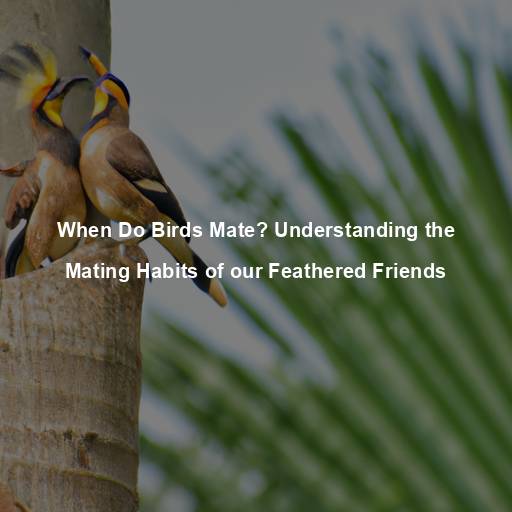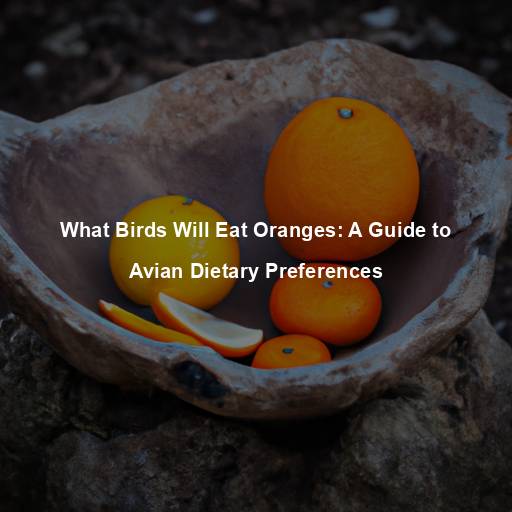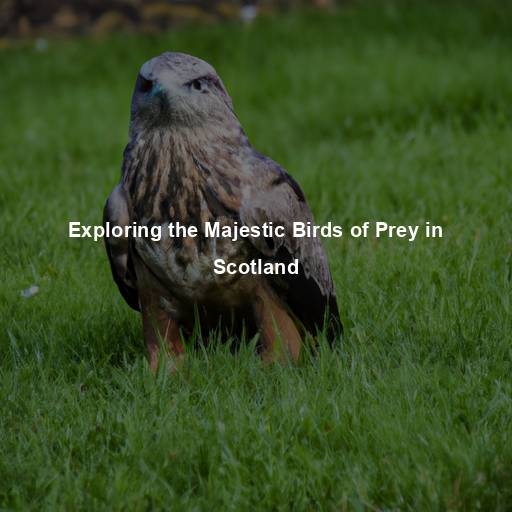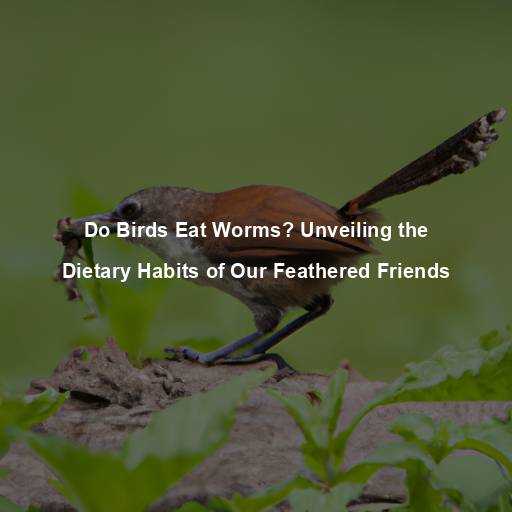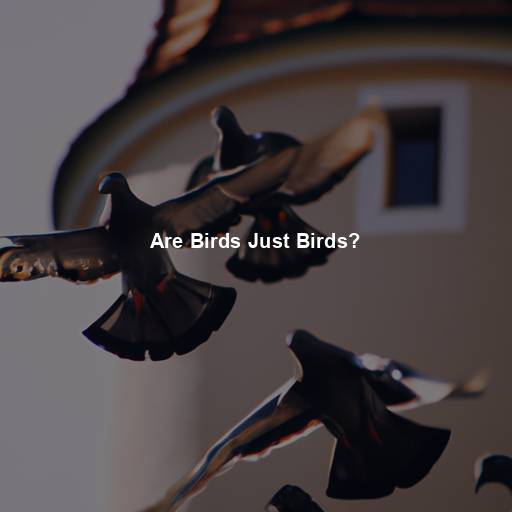When Do Birds Mate? Understanding the Mating Habits of our Feathered Friends
Last Updated on August 3, 2023 by Evan
Birds, with their vibrant colors, melodious songs, and graceful flight, have captured the admiration and fascination of humans for centuries. One aspect of avian behavior that has intrigued bird enthusiasts and researchers alike is their mating habits. From elaborate courtship displays to synchronized flights, birds engage in a wide array of behaviors to attract mates and ensure the survival of their species. In this article, we will delve into the captivating world of avian courtship and explore the question: when do birds mate?
Contents
- 1 The Timing of Avian Courtship: A Seasonal Affair
- 2 The Complexity of Avian Mating Habits
- 3 Avian Mating Strategies: Diverse Approaches to Love
- 4 The Intricacies of Avian Courtship Songs
- 5 The Role of Bird Conservation in Preserving Mating Habits
- 6 FAQs on When Do Birds Mate
- 6.1 When do birds mate?
- 6.2 How do birds attract mates?
- 6.3 Why do birds mate for only a certain period of time?
- 6.4 Are all birds monogamous?
- 6.5 How long do birds stay together after mating?
- 6.6 Do birds mate for pleasure, or is it solely for reproduction?
- 6.7 Can humans interfere with bird mating activities?
- 6.8 How long does the mating process take for birds?
- 6.9 What should I do if I find a mating pair of birds?
- 6.10 Can bird mating displays be observed and enjoyed by humans?
The Timing of Avian Courtship: A Seasonal Affair
Spring: A Time of Renewal
Spring, often referred to as the season of rebirth, is a pivotal time for birds when it comes to courtship and mating. As winter recedes and the days grow longer, many bird species begin their elaborate courtship rituals. The arrival of spring triggers hormonal changes in birds, causing an upsurge in their reproductive behaviors.
Hormones at Play
Ah, the marvels of nature! It’s simply fascinating how hormones dictate the course of life for our fine feathered friends. As the world around them awakens to the joys of spring, these avian beauties experience a burst of hormones, like testosterone and estrogen, coursing through their veins. This hormonal frenzy sets in motion a series of remarkable transformations – from the vibrant hues of their plumage to the growth of their reproductive organs – all in preparation for the intricate dance of courtship and the magic of mating season.
Courtship Displays: A Visual Extravaganza
Birds employ a variety of courtship displays to attract potential mates. These displays are often characterized by intricate movements, vibrant plumage, and mesmerizing songs. Male birds, in particular, go to great lengths to showcase their fitness and compatibility as mates. From the mesmerizing aerial acrobatics of the Red-crowned Crane to the melodious serenades of the Nightingale, each species has its unique courtship rituals.
Mating Pairs and Monogamy
When it comes to the wonderful world of bird romance, things can get quite complicated. While some feathery creatures prefer a monogamous lifestyle, committing to just one partner for the breeding season, others embrace a more open-minded approach. Think of it as a bird version of “The Bachelor,” with some species happily flitting from one partner to another. Monogamous birds, like Swans and Pigeons, take their commitments seriously, engaging in intense pair-bonding behaviors and sharing the demanding tasks of nest-building, incubation, and raising their chirpy little offspring.
Nesting and Egg-Laying
Once the romantic duo has solidified their partnership, they embark on the enigmatic journey of nest-building and egg-laying. The female avian, with a touch of mystique, meticulously scouts for the perfect nesting spot, be it a cozy tree cavity or a meticulously crafted nest made of twigs and grass. Patiently, she deposits her eggs, usually one by one, with bewildering intervals of a day or more between each delicate creation. The quantity of eggs bestowed upon the nest varies enormously among species, with some opting for a single exquisite egg, while others go all out with a baffling dozen or even more.
The fascinating world of bird reproduction takes us on a captivating journey through the intricacies of incubation. This pivotal stage is a delicate dance of warmth and growth, where eggs are nurtured and embryos take shape. Surprisingly, many bird species exhibit an equal partnership in incubation, with both males and females shouldering this vital duty. This captivating arrangement not only safeguards against lurking dangers, but also guarantees the unwavering warmth needed for the miraculous emergence of new life.
Chick Rearing: A Chorus of Parental Care
Once the eggs hatch, the real work begins for the avian parents. Both the male and female birds participate in feeding and protecting the chicks, providing them with the necessary nutrients and shelter. This period of parental care varies in duration among species, with some birds raising their young for a few weeks, while others may nurture their offspring for several months.
The Cycle Continues: From Fledglings to Future Mates
Witness the miracle of life unravel before your very eyes as tiny fluffy chicks take their first tentative steps towards independence. These young avian adventurers bravely venture out into the unknown, some forging new paths while others follow in the footsteps of their ancestors. Through the intricate dance of courtship and reproduction, these winged creatures ensure the perpetuation and rich tapestry of bird species, weaving a captivating story of life’s ceaseless cycle.
The Complexity of Avian Mating Habits
Birds, with their diverse behaviors and habitats, exhibit a wide range of mating habits. While the general patterns outlined above apply to many species, it is essential to acknowledge that exceptions and variations exist. Some birds mate outside of the traditional breeding season, while others engage in complex mating systems involving multiple partners.
The study of avian courtship and mating habits continues to captivate researchers, offering valuable insights into the evolutionary processes and ecological dynamics of bird populations. By understanding the timing and intricacies of bird mating, we gain a deeper appreciation for these remarkable creatures and their remarkable journeys of love and procreation.
As we delve into the mesmerizing realm of avian courtship, we uncover the intricate dance of hormones and instinct that guides these remarkable creatures in their pursuit of love. From the perplexing rituals to the burst of vibrant colors, every step of their mating journey leaves us in awe of the wonders of nature. Witnessing their courtship displays is a window into a world where beauty and complexity intertwine, reminding us of the delicate balance between survival and the pursuit of connection. So let us embark on this enlightening exploration, unraveling the profound influence of environmental factors on the captivating mating habits of birds.
Seasonal Cues: Nature’s Invitation
For the avian world, timing is everything when it comes to love. Birds are masters at reading the signs of their surroundings, using temperature shifts, food availability, and daylight patterns to navigate the treacherous waters of courtship. In places with pronounced seasons, like the temperate regions, spring unleashes a torrent of amorous energy as feathered creatures kickstart their breeding rituals. However, in tropical paradises where Mother Nature opts for consistency, some bird species sashay through the dance of love all year long, blurring the boundaries of traditional mating seasons.
Migration: A Journey for Love
Birds, those enigmatic creatures of the sky, possess a captivating secret: migration. It is during this mystical pilgrimage that they uncover the deep-seated intricacies of their courtship rituals. Across vast distances, they voyage with an unwavering determination, fueled by an inexplicable instinct, towards the sacred lands of procreation. Amidst this grand odyssey, these avian nomads showcase a bewitching repertoire of navigation techniques, tapping into the ethereal pulse of celestial bodies, the whispers of ancient landmarks, and the enigmatic magnetism of our planet itself.
Habitat Selection: Love in the Right Place
When it comes to matters of the heart, birds understand the importance of choosing the perfect habitat to increase their chances of finding a compatible partner. These feathered friends have their own personal preferences when it comes to where they hang their wings – whether it’s the sprawling grasslands, the mysterious depths of dense forests, or the tranquil wetland marshes. By selecting a habitat that meets their every need, from abundant food to cozy nesting sites, our avian friends maximize their odds of attracting a potential mate. This intricate dance of courtship is beautifully showcased in the stunning variety of ecosystems across the globe, where birds create their own unique love stories.
Avian Mating Strategies: Diverse Approaches to Love
Lekking: A Display of Dominance
In some bird species, particularly those with polygamous mating systems, males gather in specific areas known as leks to engage in competitive displays. Lekking is a fascinating phenomenon where males showcase their physical prowess and ornate plumage to attract females. The dominant males occupy central positions within the lek, while subordinate males attempt to gain attention through elaborate displays or mimicry. Females visit these leks to assess the males’ quality and select their preferred mates.
Extra-Pair Copulation: Love Beyond Boundaries
It is no secret that the world of avian relationships is filled with unexpected twists and turns. Although monogamy seems to be the norm for many birds, there exists a darker and more complex side to their love lives. Yes, my dear readers, I am referring to the scandalous phenomenon known as extra-pair copulation, or more commonly referred to as “cheating”. Birds, it seems, are not immune to the allure of a clandestine affair, stepping outside the boundaries of their established pair bonds in the quest for genetic diversity or additional resources.
Cooperative Breeding: It Takes a Village
In the mesmerizing world of avian behavior, lies a captivating phenomenon known as cooperative breeding. It unveils a tale of communal effort and shared responsibilities, where a symphony of winged creatures join forces in raising the next generation. Like a covert alliance, these altruistic “helpers” selflessly lend a hand in tasks ranging from nourishing the hungry chicks to safeguarding their precious nest. Such collaboration not only bestows the breeding pair with a higher likelihood of survival but also grants them the freedom to allocate their invaluable resources towards future endeavors of procreation.
Sexual Dimorphism: Beauty and the Beak
In the realm of avian romance, there exists a captivating phenomenon known as sexual dimorphism. This beguiling concept showcases a mesmerizing divergence in the physical attributes of males and females within a species. Picture this: male birds bedecked in resplendent plumage, intricate crests, and ostentatious embellishments, all in a grand attempt to captivate the attention of their potential mates. This extravagant evolution of male characteristics is tinkered by the mysterious machinations of female mate preferences, as they intricately assess potential partners based on awe-inspiring genetic prowess and remarkable resource accumulation.
The Intricacies of Avian Courtship Songs
Melodies in the Air
Birds are renowned for their enchanting songs, which play an essential role in courtship and mating. These melodious tunes are not merely melodious entertainment; they serve as powerful communication tools. Male birds utilize their songs to establish territories, attract females, and convey their fitness as potential mates. The complexity and structure of bird songs vary greatly among species, with each song carrying unique characteristics and meanings.
Duet Singing: Harmonious Courtship
Birds have an extraordinary way of expressing their affection that truly transcends expectations. In certain avian species, courtship becomes a symphony of harmonious duets, where both male and female chorus together to create an enchanting musical display. This synchronized serenade not only solidifies their bond but also serves as a powerful tool to safeguard their territories and reaffirm their unwavering commitment to one another.
Imitation and Innovation: The Language of Love
The mesmerizing world of avian melodies never ceases to amaze us. From the depths of their wings, birds unveil a tapestry of mimicry and innovation, blending together the aromas of their surroundings and captivating melodies of fellow feathered companions. It is a symphony of evolution at its finest – a testament to their adaptability and prowess. As we delve into their melodic escapades, each species unravels its unique songbook, with some like the enchanting Mockingbird taking center stage, while others craft harmonies that are truly one-of-a-kind, echoing the very essence of their individuality.
The Role of Bird Conservation in Preserving Mating Habits
The world of avian romance is a captivating maze, where courtship dances and passionate displays entwine with the very survival of bird populations. These enigmatic mating habits hold the key to unlocking the secrets of bird conservation. By delving into the bewildering intricacies of courtship behaviors, we unravel the threads that connect breeding grounds, conservation strategies, and sustainable practices. Together, we hold the power to safeguard these enthralling rituals, weaving a tapestry that will endure for generations, as we nurture their habitats, combat the specter of habitat loss, and awaken the world to the crucial importance of avian love nests.
FAQs on When Do Birds Mate
When do birds mate?
Birds engage in the enchanting dance of mating, a phenomenon that unfolds with an air of intrigue and fascination. The intricate mechanisms that govern this courtship ritual are dictated by various factors, including the whims of each unique bird species. While spring and summer serve as the backdrop for these harmonious unions, the specific nuances of timing can leave even the most astute observers perplexed. Nature, it seems, possesses a captivating burst of whimsy, ensuring that bird mating remains an intricate tapestry woven in a mosaic of diversity across different species and geographical locations.
How do birds attract mates?
Birds use various methods to attract mates, typically through elaborate courtship displays. These displays can include singing songs, dancing, showcasing vibrant plumage, and performing impressive aerial maneuvers. These displays serve as signals to potential mates, indicating the bird’s fitness and suitability as a partner.
Why do birds mate for only a certain period of time?
Birds mate during specific periods to ensure that their offspring have the best chance of survival. By synchronizing their breeding activities with favorable environmental conditions, such as increased food availability or milder weather, birds can maximize the chances of successfully raising their young.
Are all birds monogamous?
No, not all bird species are monogamous. While many bird species form pair bonds and mate with only one partner during a breeding season, there are also species that exhibit polygamy, polyandry (female mating with multiple males), or promiscuity. The mating system can vary greatly depending on the species, and even within a species, individual birds may have different mating strategies.
How long do birds stay together after mating?
In the captivating world of birds, the intricacies of mating and partnership weave a fascinating tapestry of diverse timelines. From fleeting trysts that flutter upon the whims of a single breeding season, to the profound and enduring commitments that stand the test of time, avian relationships exemplify the infinite shades of affection. Each species, with its unique ecological niche, orchestrates its own symphony of bonds, rendering the duration of pairings as diverse and perplexing as the plumage that adorns their wings.
Do birds mate for pleasure, or is it solely for reproduction?
Bird mating behavior is primarily driven by the instinct to reproduce and ensure the survival of the species. Unlike humans, birds do not mate for pleasure or purely for recreational purposes. Their reproductive activities are solely focused on fertilization and producing viable offspring.
Can humans interfere with bird mating activities?
The delicate dance of bird mating and breeding can sometimes be thrown into disarray by the unpredictable influence of human activities. Our very presence, often unintentionally disruptive, can disturb the sacred rituals of courtship and intimacy that these feathered creatures hold dear. Habitats, once lush with life, bear the scars of our wanton destruction, leaving these birds searching for safe havens to profess their love and raise their young. And if that weren’t enough, the toxic cloud of pollution hangs heavy, infiltrating their very being, dampening their chances of successful reproduction. As stewards of this planet, it is imperative that we tread lightly, honoring the sacred interconnectedness that binds us all, and provide these majestic beings with the space they so desperately need to continue the beautiful dance of life.
How long does the mating process take for birds?
Birds, oh mysterious creatures of the sky! Their mating dance, a spectacle like no other, reflects the diversity of their species. From intricate courtship rituals that unfold over days, to fleeting moments of passion that occur in the blink of an eye, these feathery beings surely keep us humans perplexed. In this wondrous world, each species unveils its own unique spectacle, showcasing the burstiness of their courtship and the baffling brevity of copulation.
What should I do if I find a mating pair of birds?
Birds engaging in the beautiful dance of courtship deserve our utmost admiration and respect. To fully appreciate their delicate moments, we should tread lightly and maintain a respectful distance to avoid causing any disturbances that could disrupt their enchanting rituals. By giving them the space they need and minimizing our human interference, we can play a pivotal role in safeguarding their flourishing populations and nurturing their innate behaviors.
Can bird mating displays be observed and enjoyed by humans?
Yes, bird mating displays can indeed be observed and enjoyed by humans. Many bird species perform stunning aerial dances, sing beautiful songs, or display magnificent plumage during their courtship rituals. Observing these displays can be a fascinating and rewarding experience for bird enthusiasts and nature lovers. However, remember to maintain a respectful distance and avoid any actions that may disturb or endanger the birds.

